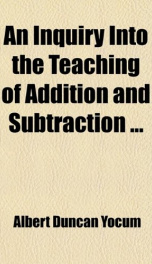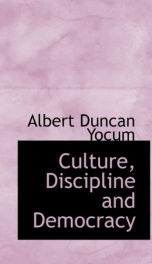an inquiry into the teaching of addition and subtraction

Purchase of this book includes free trial access to www.million-books.com where you can read more than a million books for free. This is an OCR edition with typos. Excerpt from book: CHAPTER I.THE NUMERICAL CONTENT OF CHILDREN'S MINDS UPON THEIR FIRST ENTERING SCHOOL. From 1869, when the Berlin Pedagogical Union initiated the first general inquiry into the ideational range (Vorstellungskreiz) of children entering school,1 such tests have been common in the pedagogic centres of Germany. Nor has the least service which Dr. Hall has done to education in America been the impetus given to similar investigation through the forceful demonstration of its value and suggestive directions as to its method, contained in his now classical report on the tests in Boston and Kansas City sthools.2 Numerous, however, as these tests have been, they have shed but little light upon the numerical knowledge possessed by children at the beginning of their school career. Among the 10,000 first tested in Berlin, 74.35 per cent were found to be familiar with the number 2,; 73.99 per cent, with 3, and 72.65 per cent, with 4and even this sparse data loses much of its value, when it is known that some of the returns from which it was obtained were made after the children had been several weeks in school. These are the only facts concerning children's numerical knowledge which the tests sought to obtain, and yet inquiry was made into their familiarity with almost a hundred concepts. When one takes into account the proportionate time given to number- work in the curriculum of the elementary school, together with the fact that a main object in these and succeeding tests was to determine what knowledge the beginner could be certainly assumed to possess, the neglect to further test his numerical knowledge can be understood only by assuming that investigators have taken it for grantedperhaps quite unconsciouslythat the child enters school practically ignorant of even the simplest fa...
Info about the book
Author:
Series:
Unknown
ISBN:
1271077507
Rating:
4.5/5 (1)Your rating:
0/5
Languge:
English
Users who have this book
Users who want this book
What readers are saying
What do you think? Write your own comment on this book!
write a commentif you like an inquiry into the teaching of addition and subtraction try:
Other books by this author
Do you want to read a book that interests you? It’s EASY!
Create an account and send a request for reading to other users on the Webpage of the book!


